Denmark is known for its rich and flavourful food, reflecting its culture and traditions. The food in Denmark is simple, satisfying, and made with fresh, local ingredients. Danish cuisine offers a wide range of delicious dishes, from the popular open-faced sandwiches to sweet pastries. Each meal tells a story of Denmark’s history and values. If you’re curious about local food, you’ll find plenty of options that showcase the true flavours of the country. Denmark’s food scene is truly an essential part of the travel experience.
10 Best Foods In Denmark
Here are the ten best food in Denmark, loved for their simple ingredients, home-style cooking, and deep roots in Danish daily life and traditions:
1. Smørrebrød
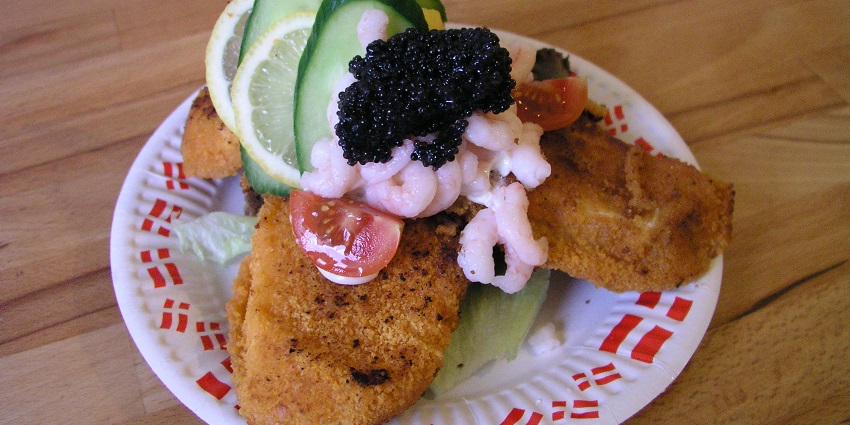
Photo: Nillerdk / Wikimedia Commons
Smørrebrød is a traditional Danish open-faced sandwich with a slice of dense rye bread topped with various ingredients such as pickled herring, boiled eggs, cold cuts, cheese, or shrimp. Each sandwich is carefully arranged and garnished with herbs, onions, or sauces to make it both visually appealing and flavourful. It is typically eaten with a knife and fork rather than by hand. Smørrebrød is popular during lunchtime or special occasions and showcases the importance of presentation in Danish culinary culture.
Cost: DKK 80 – 150 / ₹950 – 1,780
Best Places To Try: Copenhagen, Aarhus, Odense
2. Frikadeller
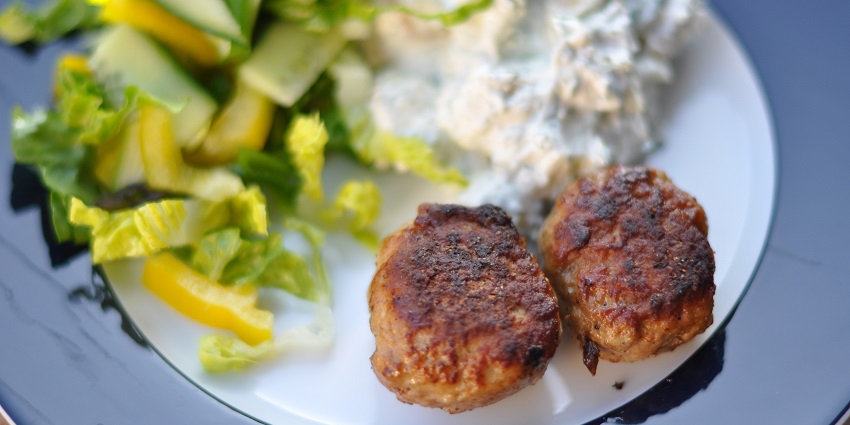
Photo: cyclonebill / Wikimedia Commons
Frikadeller, a famous food in Denmark, is a traditional Danish meatball made with ground pork or a mixture of pork and beef mixed with onions, eggs, breadcrumbs, salt, and pepper. They are shaped into flat, round patties and pan-fried until they develop a golden, crispy crust while staying juicy. These meatballs are commonly served with boiled potatoes, gravy, and pickled red cabbage or enjoyed cold on rye bread. Frikadeller is a popular home-cooked dish across Denmark and is appreciated for its simplicity, rich taste, and versatility in hot and cold lunches.
Cost: DKK 100 – 160 / ₹1,180 – 1,900
Best Places To Try: Copenhagen, Aalborg, Esbjerg
3. Stegt Flæsk Med Persillesovs
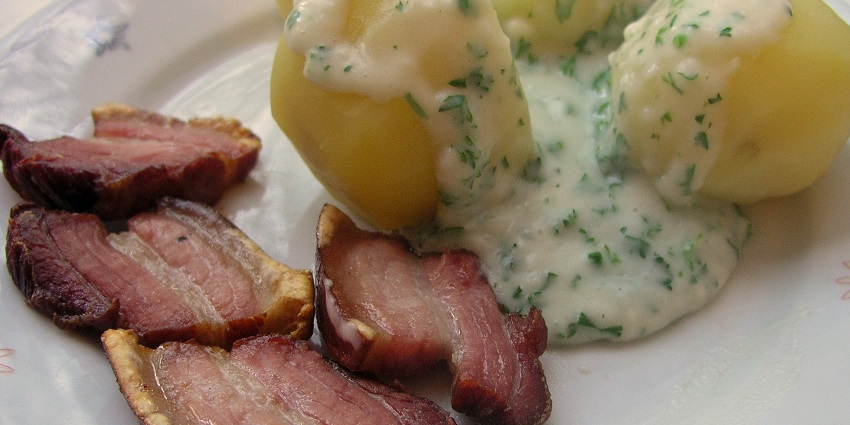
Photo: Nillerdk / Wikimedia Commons
Stegt flæsk med persillesovs is Denmark’s official national dish, consisting of crispy, thick slices of pork belly with boiled potatoes and a creamy white sauce flavoured with fresh parsley. The pork belly is usually fried until the skin turns golden and crunchy, offering a satisfying contrast to the smooth, mild sauce and soft potatoes. The dish is deeply rooted in Danish tradition and is often eaten during family dinners or special gatherings. It’s hearty, filling, and a true comfort food that reflects Danish love for simple, well-balanced flavours.
Cost: DKK 150 – 200 / ₹1,780 – 2,370
Best Places To Try: Copenhagen, Randers, Roskilde
4. Rugbrød
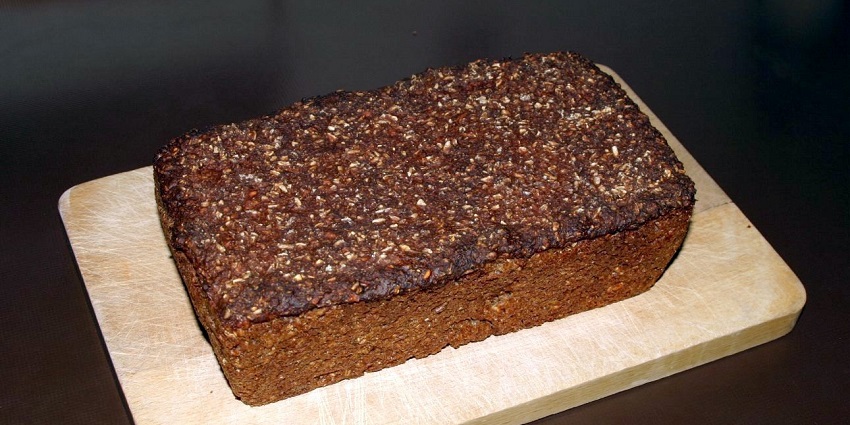
Photo: Sten / Wikimedia Commons
Rugbrød, one of the best foods in Denmark, is a dense, dark rye bread that serves as a daily staple in many Danish households. It is made from whole grains, rye flour, and sometimes seeds and is baked slowly to develop a slightly sour flavour and chewy texture. It’s most commonly used as the base for open-faced sandwiches like Smørrebrød and is favoured for its nutritional value, being high in fibre and long-lasting. Rugbrød is rarely eaten independently but plays a central role in Danish meals, often enjoyed with butter, cheese, cold meats, or pickled toppings.
Cost: DKK 35 – 60 / ₹415 – 710
Best Places To Try: Copenhagen, Aarhus, Vejle
5. Rødgrød Med Fløde
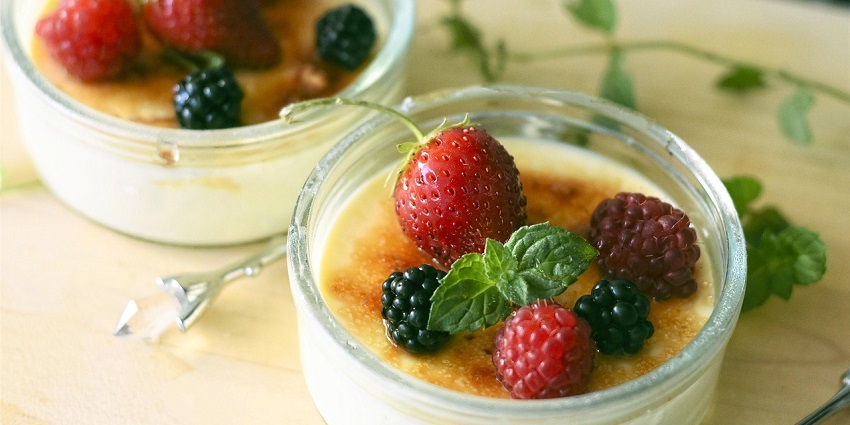
Photo: RitaE / pxhere / Image For Representation Only
Rødgrød med fløde is a classic Danish dessert made by simmering a mix of red berries such as strawberries, raspberries, and redcurrants with sugar to form a thick, sweet pudding. Once cooled, the dessert is served with cold cream, which balances the tartness of the berries. It is particularly popular during summer when fresh berries are in season. The dessert is loved for its refreshing taste and the fun challenge it presents when trying to pronounce its name. It’s light, flavourful, and widely enjoyed across Denmark.
Cost: DKK 60 – 90 / ₹710 – 1,070
Best Places To Try: Copenhagen, Odense, Silkeborg
6. Æbleskiver
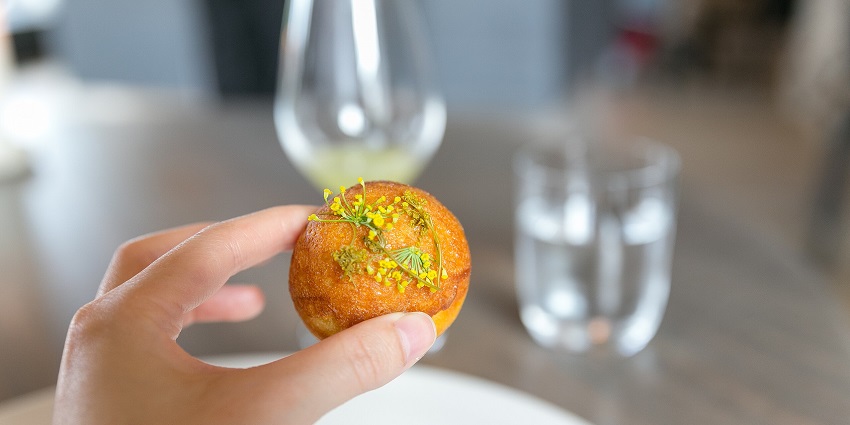
Photo: City Foodsters / Wikimedia Commons
Æbleskiver are pancake balls made from a batter similar to regular pancakes but cooked in a special pan that shapes them into round forms. They are soft and fluffy inside, with a slightly crisp exterior, and are usually served with powdered sugar and fruit jam. Though the name means “apple slices,” most modern versions do not contain any apples. Æbleskiver is a staple treat during the Christmas season, often shared among families along with hot drinks. They are festive, comforting, and loved by people of all ages.
Cost: DKK 40 – 75 / ₹475 – 890
Best Places To Try: Copenhagen, Viborg, Aalborg (especially during winter and Christmas markets)
7. Flæskesteg
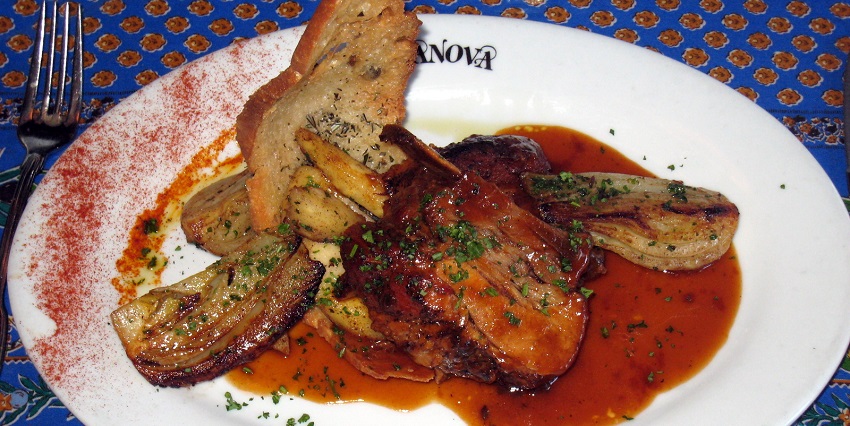
Photo: Ryosuke Hosoi / Wikimedia Commons / Image For Representation Only
Flæskesteg is a Danish roast pork dish made from pork loin with the skin still attached, which is scored and heavily salted before roasting to create a layer of crispy crackling. The meat is tender and juicy, while the crackling adds a satisfying crunch. Flæskesteg is traditionally served with boiled or caramelised potatoes, brown gravy, and pickled red cabbage, especially during Christmas. It is also enjoyed throughout the year at Sunday dinners or special occasions. The dish reflects Denmark’s strong culinary traditions, centred around simple yet flavourful preparations.
Cost: DKK 140 – 200 / ₹1,660 – 2,370
Best Places To Try: Copenhagen, Herning, Aarhus
8. Tarteletter
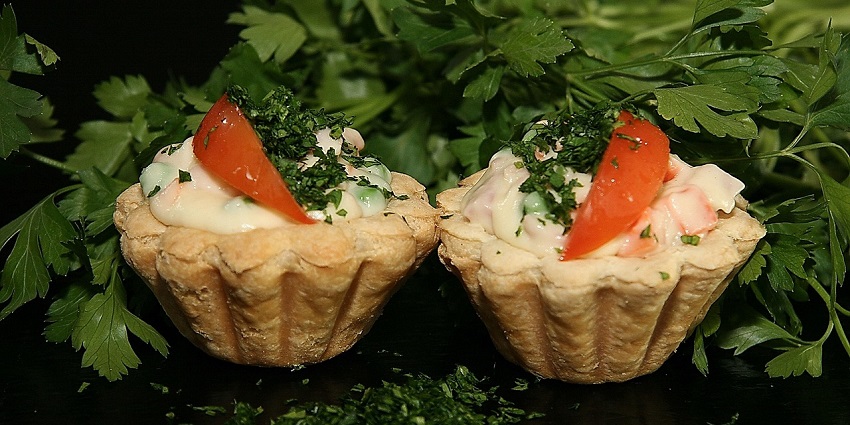
Photo: mp1746 / Pixabay / Image For Representation Only
Tarteletters are small puff pastry shells filled with a creamy mixture of cooked chicken and white asparagus, often bound together in a mild white sauce. The pastries are light and crisp, perfectly contrasting the rich filling inside. Tarteletters are commonly served as appetisers or light meals during family gatherings, festive dinners, or traditional lunches. They are especially popular among older generations and are sometimes prepared in large batches for special events. The dish offers a flaky texture and savoury flavour, making it both nostalgic and satisfying.
Cost: DKK 90 – 140 / ₹1,070 – 1,660
Best Places To Try: Copenhagen, Esbjerg, Svendborg
9. Danish Hotdog

Photo: CC0 Public Domain / pxhere / Image For Representation Only
The Danish hot dog is a much-loved street food found at stalls across Denmark. It includes a red or plain sausage in a soft bun, topped with remoulade, mustard, ketchup, raw onions, crispy onions, and pickles. Its strong mix of sweet, sharp, and savoury flavours makes it a go-to snack for locals. Though quick to prepare, it is filling and flavourful, often eaten during casual outings or on the go. The Danish hot dog has become a simple yet essential part of the country’s food culture, offering a satisfying bite to people of all ages at any time of day.
Cost: DKK 30 – 50 / ₹355 – 590
Best Places To Try: Copenhagen, Aarhus, Aalborg (street food stalls and hotdog stands)
10. Wienerbrød (Danish Pastry)
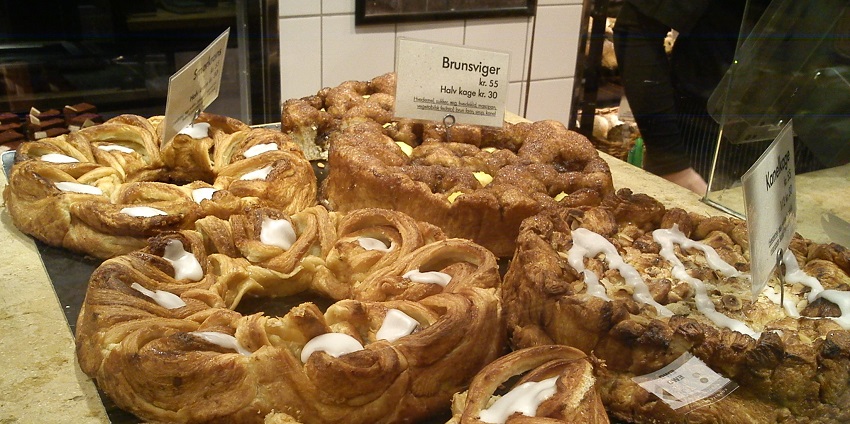
Photo: RhinoMind / Wikimedia Commons
Wienerbrød is a traditional Danish pastry known for its rich, buttery layers and light, crisp texture. Made using laminated dough, it is carefully rolled and folded to create multiple thin layers that bake to a golden finish. The pastry is usually sweet, filled with custard, fruit jam, or almond-flavoured paste, and often decorated with icing or chopped nuts. It is widely available in Danish bakeries and commonly enjoyed during breakfast or as a midday treat with coffee. Wienerbrød is a staple of everyday Danish life and a highlight of the country’s baking tradition.
Cost: DKK 25 – 45 / ₹295 – 535
Best Places To Try: Copenhagen, Aarhus, Odense
Food in Denmark offers a taste of the country’s rich culture. Each meal is made with care and tradition, from hearty meat dishes to sweet pastries. Whether you try a classic Smørrebrød or a delicious Danish pastry, the dishes in Denmark are something you won’t forget. If you plan to visit Denmark, book your next trip with TripXL for an easy and enjoyable trip to Denmark.
Cover Photo: CC0 Public Domain / pxhere / Image For Representation Only


 WhatsApp
WhatsApp
 Twitter
Twitter









